
About Seborrhoeic Dermatitis
The condition commonly known as dandruff refers to flaking of skin off the scalp, causing noticeable white 'fall out' on dark clothing. People with the condition often complain of an itchy scalp too, although this is not always the case. Dandruff is actually a mild form of a condition called seborrheic dermatitis. Dermatitis just means inflammation affecting the skin, and seborrheic means it affects the areas in and around sebaceous glands. These specialized glands produce sebum, the natural oil which keeps skin and scalp lubricated and stops it drying out and cracking open, which would allow organisms to invade. Although we only think of the scalp in relation to dandruff, seborrheic dermatitis affects other parts of the body, such as the central area of the face and hairy skin over chest and stomach. The condition often flares up at times of stress and is thought to be worse when the immune system is impaired, and therefore is not uncommon in, but not limited to, HIV patients. It most commonly occurs in younger adults rather than older people, possibly because sebaceous gland activity declines with age. When affecting the scalp, there is typically redness, itching, and flaking of the skin. The...
The condition commonly known as dandruff refers to flaking of skin off the scalp, causing noticeable white 'fall out' on dark clothing. People with the condition often complain of an itchy scalp too, although this is not always the case. Dandruff is actually a mild form of a condition called seborrheic dermatitis. Dermatitis just means inflammation affecting the skin, and seborrheic means it affects the areas in and around sebaceous glands. These specialized glands produce sebum, the natural oil which keeps skin and scalp lubricated and stops it drying out and cracking open, which would allow organisms to invade. Although we only think of the scalp in relation to dandruff, seborrheic dermatitis affects other parts of the body, such as the central area of the face and hairy skin over chest and stomach. The condition often flares up at times of stress and is thought to be worse when the immune system is impaired, and therefore is not uncommon in, but not limited to, HIV patients. It most commonly occurs in younger adults rather than older people, possibly because sebaceous gland activity declines with age. When affecting the scalp, there is typically redness, itching, and flaking of the skin. The flakes can sometimes be quite large and greasy and reveal red, moist scalp underneath. Some people feel that dandruff is actually a different condition to seborrheic dermatitis and does not involve the inflammation seen with the latter. But it could just be a matter of severity.
- Important notification about information and brand names used in this slideshow!
- Photo courtesy of amanda dias by Flickr : www.flickr.com/photos/amandadias/6582893153/
- www.bad.org.uk/site/872/Default.aspx
- http://www.e-ijd.org/article.asp?issn=0019-5154
- year=2010
- volume=55
- issue=2
- spage=130
- epage=134
- aulast=Ranganathan
- http://emedicine.medscape.com/article/1108312-overview
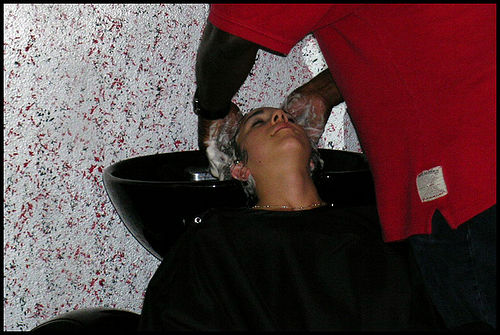
Dandruff And Hair Hygiene
Many people have the idea that dandruff is a result of poor hygiene and not keeping the hair clean enough, but we know this is not really the case. The factors associated with dandruff and seborrheic dermatitis are more complicated than just the cleanliness of the hair. But because the condition seems to be related to sebaceous oil production, if you have greasy hair, washing it regularly may help to reduce the chance of dandruff. But don’t go mad! Washing the hair too frequently could make the condition worse as we know that washing the natural oils away too rigorously only encourages the secretion of more oil. Also too frequent hair washing will, in the short-term, leave the scalp very dry, making it itchy and flaky.
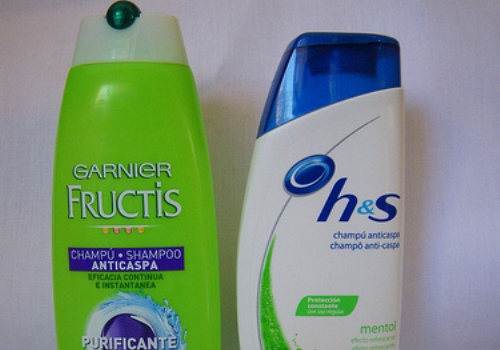
Anti-Dandruff Shampoos
For most cases of dandruff or seborrheic dermatitis, a medicated shampoo can be used to treat the current episode and also help to prevent further outbreaks. Regular use of a medicated shampoo can serve a number of functions. One is that it will reduce the amount of sebum on the scalp, which is what the yeasts associated with the condition feed off. It will also help to loosen and lift off the large skin flakes which form and this will relieve irritation and prevent the flakes being shed on clothing. The last and possibly most important function of anti-dandruff shampoos is the incorporation of anti-fungal agents. The most common are ketoconazole, zinc pyrithione, ciclopirox and selenium. These reduce the population of the yeast Malassezia, which is naturally found on the scalp, but plays a role in causing seborrheic dermatitis. Ingredients aimed at reducing the speed of cell turnover, which is thought to be accelerated in seborrheic dermatitis are often also included in anti-dandruff shampoos. These include zinc pyrithione, selenium (both of which have more than one action) and coal tar. Inclusion of salicylic acid is to help to loosen the scales during shampooing. Shampoos should be applied and lathered, then...
For most cases of dandruff or seborrheic dermatitis, a medicated shampoo can be used to treat the current episode and also help to prevent further outbreaks. Regular use of a medicated shampoo can serve a number of functions. One is that it will reduce the amount of sebum on the scalp, which is what the yeasts associated with the condition feed off. It will also help to loosen and lift off the large skin flakes which form and this will relieve irritation and prevent the flakes being shed on clothing. The last and possibly most important function of anti-dandruff shampoos is the incorporation of anti-fungal agents. The most common are ketoconazole, zinc pyrithione, ciclopirox and selenium. These reduce the population of the yeast Malassezia, which is naturally found on the scalp, but plays a role in causing seborrheic dermatitis. Ingredients aimed at reducing the speed of cell turnover, which is thought to be accelerated in seborrheic dermatitis are often also included in anti-dandruff shampoos. These include zinc pyrithione, selenium (both of which have more than one action) and coal tar. Inclusion of salicylic acid is to help to loosen the scales during shampooing. Shampoos should be applied and lathered, then left on for five to ten minutes to give them plenty of contact time with the yeasts. If there is a thick layer of skin flakes over the scalp which might reduce contact, these can be softened and removed by rubbing olive oil into the scalp before shampooing. Once the current episode is cleared, you should continue using a medicated shampoo on a regular basis e.g. once a week, to prevent recurrence.

Sunlight May Be Helpful
Getting a little sunlight on your head may help with your dandruff. UV light is known to be an effective treatment for another skin condition involving excessive skin cell turnover – psoriasis. But safe UV light emitters which don’t contain the harmful UVB rays are usually used in the treatment of that condition. While natural sunlight - in small doses - is beneficial in all kinds of ways, it is very important not to overdo it. In the short-term too much sun on the scalp will cause drying out and burning of the skin, which will then flake off, making dandruff appear worse. And in the long-term there is the risk of serious damage and development of skin cancer. So by all means leave your head uncovered for short periods while out in the sun, but don’t overdo it and you may need to wear a sunscreen if you have significant hair loss/baldness.
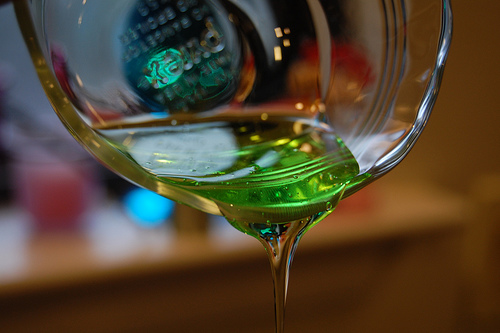
Natural And Other Anti-Dandruff Remedies
Because the yeasts which live on the scalp seem to play a crucial role in episodes of seborrheic dermatitis, other treatments which are anti-fungal may be effective – such as shampoos containing tea tree oil. The oil is extracted from an Australian plant and appears to have anti-fungal and anti-bacterial properties. However, while studies have shown tea tree oil to be effective in other fungal conditions such as Athlete’s Foot (tinea pedis) and fungal infections of the toenails, there is no conclusive evidence to support its effectiveness in treating dandruff. But equally, it’s unlikely to do harm. Aloe vera products use an extract from the leaves of a plant which it is claimed has anti-fungal, anti-bacterial and anti-inflammatory properties. If it genuinely does have anti-fungal properties then it might well be of use to treat dandruff and again, is unlikely to do harm. It is available in gels to rub into the scalp and shampoos. Preparations containing steroids may help to soften and remove scaling and will also relieve itching, soreness and redness, by their anti-inflammatory effects. They can be found in the form of lotions specially developed for the scalp, but as they often contain potent steroids you may...
Because the yeasts which live on the scalp seem to play a crucial role in episodes of seborrheic dermatitis, other treatments which are anti-fungal may be effective – such as shampoos containing tea tree oil. The oil is extracted from an Australian plant and appears to have anti-fungal and anti-bacterial properties. However, while studies have shown tea tree oil to be effective in other fungal conditions such as Athlete’s Foot (tinea pedis) and fungal infections of the toenails, there is no conclusive evidence to support its effectiveness in treating dandruff. But equally, it’s unlikely to do harm. Aloe vera products use an extract from the leaves of a plant which it is claimed has anti-fungal, anti-bacterial and anti-inflammatory properties. If it genuinely does have anti-fungal properties then it might well be of use to treat dandruff and again, is unlikely to do harm. It is available in gels to rub into the scalp and shampoos. Preparations containing steroids may help to soften and remove scaling and will also relieve itching, soreness and redness, by their anti-inflammatory effects. They can be found in the form of lotions specially developed for the scalp, but as they often contain potent steroids you may need a prescription from your doctor for them. Steroids are only used in short-term treatment because of the side effects associated with long-term use, such as skin thinning, other damage to the skin and the effects of absorption by the body.
- Important notification about information and brand names used in this slideshow!
- Photo courtesy of Jay Malone by Flickr : www.flickr.com/photos/jcorduroy/2989463961/
- www.webmd.com/vitamins-and-supplements/lifestyle-guide-11/supplement-guide-tea-tree-oil
- http://www.aloeplant.info/what-can-aloe-do-for-your-dandruff/
- http://www.bad.org.uk/site/872/Default.aspx
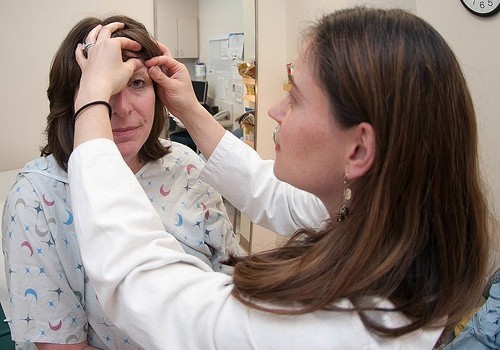
Check With Your Doctor
There are a number of skin conditions and related medical conditions which can cause similar symptoms to those of seborrheic dermatitis. So if the treatment you are using is not working, or your condition is particularly severe you should consider seeing a doctor to receive a proper diagnosis. Your doctor will be able to take scrapings of skin scales which he/she will send to a laboratory for culture (growth). This will confirm whether yeasts are present and the species, which may influence treatment. The absence of yeasts may indicate another cause of your symptoms, one of the most common of which is psoriasis. This is a similar condition in that normal cell turnover is increased, but in psoriasis the discarded cells build up into thicker, drier stacks, called plaques and do not naturally flake away. Fungi have no part to play in psoriasis so the treatments are entirely different as anti-fungals will not help. Other conditions which can produce similar symptoms to those of seborrheic dermatitis include eczema and impetigo both of which would also require different treatment. Rarely the symptoms might be associated with serious diseases affecting other parts of the body, such as Paget’s disease (which affects bone)...
There are a number of skin conditions and related medical conditions which can cause similar symptoms to those of seborrheic dermatitis. So if the treatment you are using is not working, or your condition is particularly severe you should consider seeing a doctor to receive a proper diagnosis. Your doctor will be able to take scrapings of skin scales which he/she will send to a laboratory for culture (growth). This will confirm whether yeasts are present and the species, which may influence treatment. The absence of yeasts may indicate another cause of your symptoms, one of the most common of which is psoriasis. This is a similar condition in that normal cell turnover is increased, but in psoriasis the discarded cells build up into thicker, drier stacks, called plaques and do not naturally flake away. Fungi have no part to play in psoriasis so the treatments are entirely different as anti-fungals will not help. Other conditions which can produce similar symptoms to those of seborrheic dermatitis include eczema and impetigo both of which would also require different treatment. Rarely the symptoms might be associated with serious diseases affecting other parts of the body, such as Paget’s disease (which affects bone) and Lupus erythematosus (which can affect a number of organs). They can even be caused by reaction to some medicines. Even if your condition is confirmed as seborrheic dermatitis, a visit to the doctor may be helpful if you are struggling to control it. Your doctor will be able to prescribe and advise on the safe use of potent steroids which can be helpful in short burst to control flare-ups of the condition.
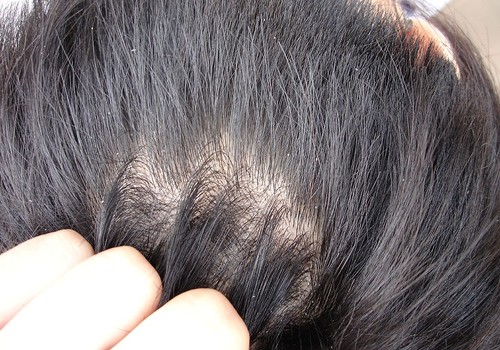
Causes Of Dandruff
Although the precise cause of seborrheic dermatitis is not known, it is thought to be associated with yeasts of the genus Malessezia (some of which you may see called Pityrosporum in older references). These yeasts occur naturally on the body but the species particularly linked with seborrheic dermatitis appear only to be found on the scalp. For many people the yeasts cause no problems, but for unknown reasons in susceptible individuals they increase in number. This leads to problems as the yeasts feed off the sebum naturally found on the scalp and produce a by-product (oleic acid) which irritates the skin, setting up inflammation which causes redness and itching. The oleic acid also causes lifting of the dead skin scales on the surface of the scalp, which clump together as they are shed, producing the characteristic skin ‘flakes’. So researchers believe that the cause of seborrheic dermatitis is a combination of Malessezia yeast, sebaceous gland activity and individual susceptibility. Individual susceptibility may be linked to immune function – some people are able to control the yeast population with their immune system while others are not.
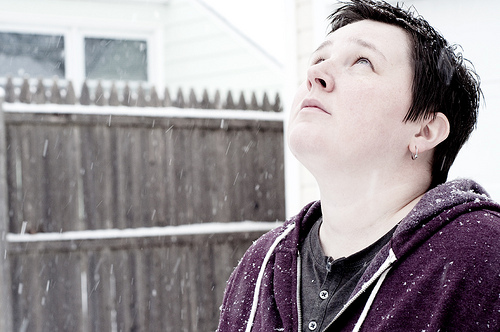
Dandruff Triggers
Because our immune system may have a part to play in the development of seborrheic dermatitis, being tired or stressed (thought to adversely affect immune function) may trigger an episode. It’s also been found that the condition appears to be more common in winter. This is thought to be due to lower humidity during the colder months in some countries, and possibly to less exposure to sunlight. Sometimes allergy to chemicals, such as those in hair products such as creams, gels, sprays and other styling products which are left on the hair, is the culprit. Allergy to ketoconazole, an anti-fungal agent included in a number of anti-fungal shampoos has also paradoxically been observed. Unlike other fungal infections (such as candida) which are sometimes claimed to be related to diet, no relationship between dietary components and dandruff/seborrheic dermatitis has been found.
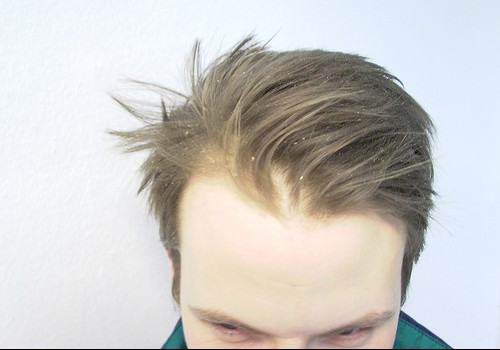
Are Dandruff And Hair Loss Linked?
First of all, despite what you might hear from shampoo manufacturers, dandruff does not cause hair loss. However there are some interesting links between the two. Also, because the more severe form – seborrheic dermatitis - is associated with inflammation, the hair follicles may be damaged leading to breaking of hair. And frequent and rough scratching of an irritated scalp can break off hairs, making the hair appear thinner. One link may be that male pattern baldness is associated with increased sensitivity of hair follicles to the male hormone testosterone - which may also be linked with seborrheic dermatitis. Testosterone may increase oiliness of the skin and the yeasts involved in the seborrheic dermatitis feed off the natural sebum or oil on the scalp. Another link is that minoxidil, which is used as a treatment for hair loss has also been found to cause dandruff in some individuals. If you have this problem, you might consider changing to another hair loss treatment as not all have this side effect. Finally it is alleged that some men panic when they see their hair floating down the plughole when they wash it in the shower, and reduce the frequency of hair-washing as...
First of all, despite what you might hear from shampoo manufacturers, dandruff does not cause hair loss. However there are some interesting links between the two. Also, because the more severe form – seborrheic dermatitis - is associated with inflammation, the hair follicles may be damaged leading to breaking of hair. And frequent and rough scratching of an irritated scalp can break off hairs, making the hair appear thinner. One link may be that male pattern baldness is associated with increased sensitivity of hair follicles to the male hormone testosterone - which may also be linked with seborrheic dermatitis. Testosterone may increase oiliness of the skin and the yeasts involved in the seborrheic dermatitis feed off the natural sebum or oil on the scalp. Another link is that minoxidil, which is used as a treatment for hair loss has also been found to cause dandruff in some individuals. If you have this problem, you might consider changing to another hair loss treatment as not all have this side effect. Finally it is alleged that some men panic when they see their hair floating down the plughole when they wash it in the shower, and reduce the frequency of hair-washing as a result. If you are susceptible to dandruff or seborrheic dermatitis this is the worst thing you can do as it increases the oiliness of the scalp which will make the flaking worse. And washing doesn’t lead to hair loss either!
- Important notification about information and brand names used in this slideshow!
- Photo courtesy of thefuturistics by Flickr : www.flickr.com/photos/thefuturistics/2254566469/
- www.webmd.com/skin-problems-and-treatments/features/thinning-hair
- http://www.patient.co.uk/health/male-pattern-baldness
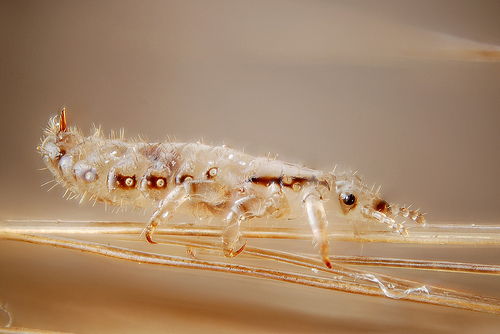
Is It Dandruff Or Head Lice?
Many people understandably worry that they might have head lice when they develop a very itchy head and can see white bits in their hair. There are some very clear and easy ways to differentiate between the two. The first, in the case of children, is that it is very rare for young children to develop dandruff or seborrheic dermatitis. But it is not uncommon for them to pick up head lice from other children at school. These parasites are spread by close physical contact which is not unusual between young schoolchildren. They can be spread to adults by similarly close contact and can survive in the home environment for short periods of time. But lice-infestation is less likely for adults who do not have close contact with children. In cases of dandruff, parting the hair and examining the scalp will show dry white skin flakes, or thick oily yellow or clear ones in the case or seborrheic dermatitis. These will be absent in a lice-infestation, but you may instead be able to see a louse, which is a grey wingless creature – often they will be moving too, making them easier to spot. You may also be able to...
Many people understandably worry that they might have head lice when they develop a very itchy head and can see white bits in their hair. There are some very clear and easy ways to differentiate between the two. The first, in the case of children, is that it is very rare for young children to develop dandruff or seborrheic dermatitis. But it is not uncommon for them to pick up head lice from other children at school. These parasites are spread by close physical contact which is not unusual between young schoolchildren. They can be spread to adults by similarly close contact and can survive in the home environment for short periods of time. But lice-infestation is less likely for adults who do not have close contact with children. In cases of dandruff, parting the hair and examining the scalp will show dry white skin flakes, or thick oily yellow or clear ones in the case or seborrheic dermatitis. These will be absent in a lice-infestation, but you may instead be able to see a louse, which is a grey wingless creature – often they will be moving too, making them easier to spot. You may also be able to see tiny teardrop-shaped lice eggs, stuck onto the hairs. Blowing these will not shift them whereas skin scales probably will. Going through the hair with a very fine-toothed comb often called a ‘nit comb’ may help to find lice and their eggs. If you are still concerned that you don’t know which it is you should see a healthcare professional such as a pharmacist, nurse or doctor or you could try using a treatment for headlice, which are available from pharmacies. If that does not help with the scalp itching, it is probably not due to head lice.
- Important notification about information and brand names used in this slideshow!
- Photo courtesy of Gilles San Martin by Flickr : www.flickr.com/photos/sanmartin/4900867726/
- www.differencebetween.info/difference-between-dandruff-and-lice
- http://liceknowingyou.com/signs-symptoms.html


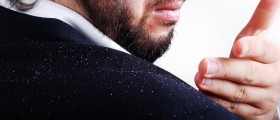
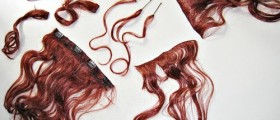
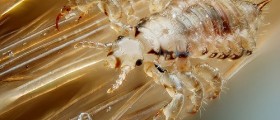
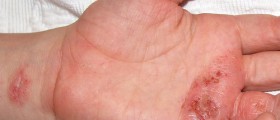
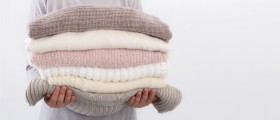
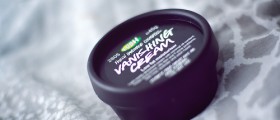
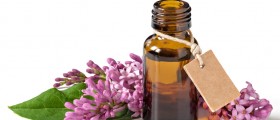
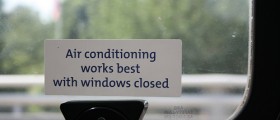
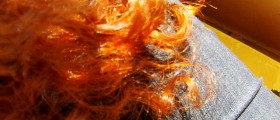


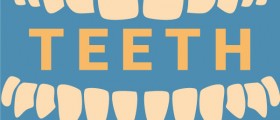
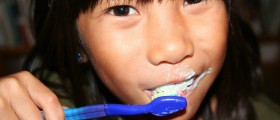
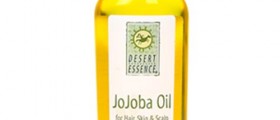
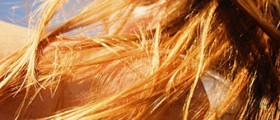
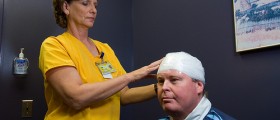
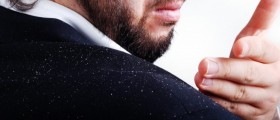
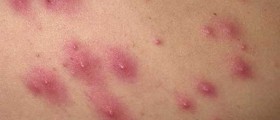
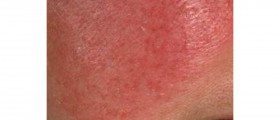
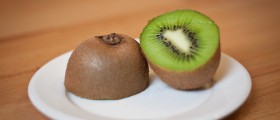
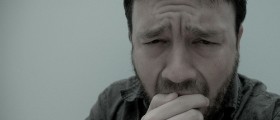
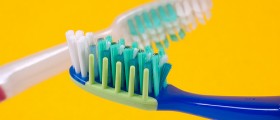
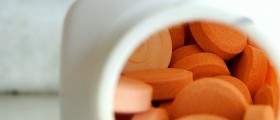
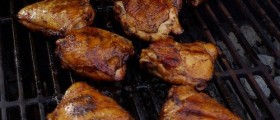
Your thoughts on this
Loading...